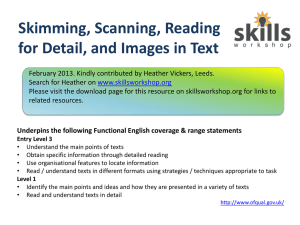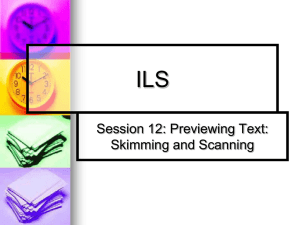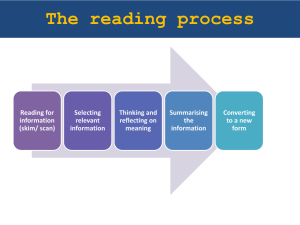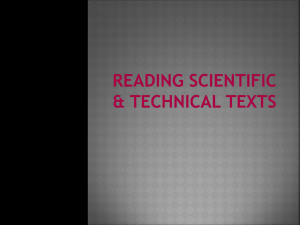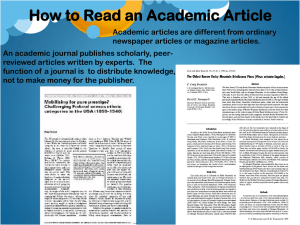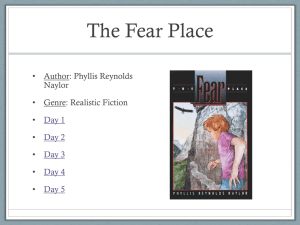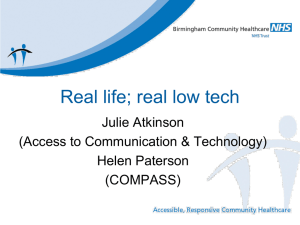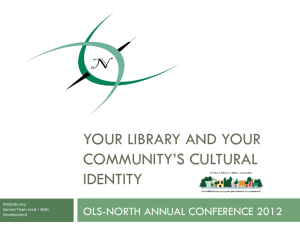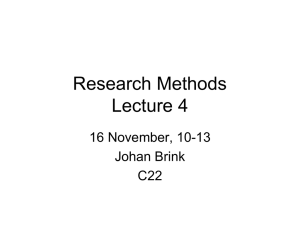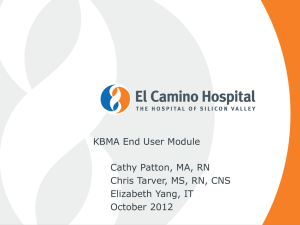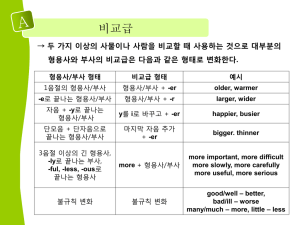Reading Strategies for Technical and Professional Documents:
advertisement
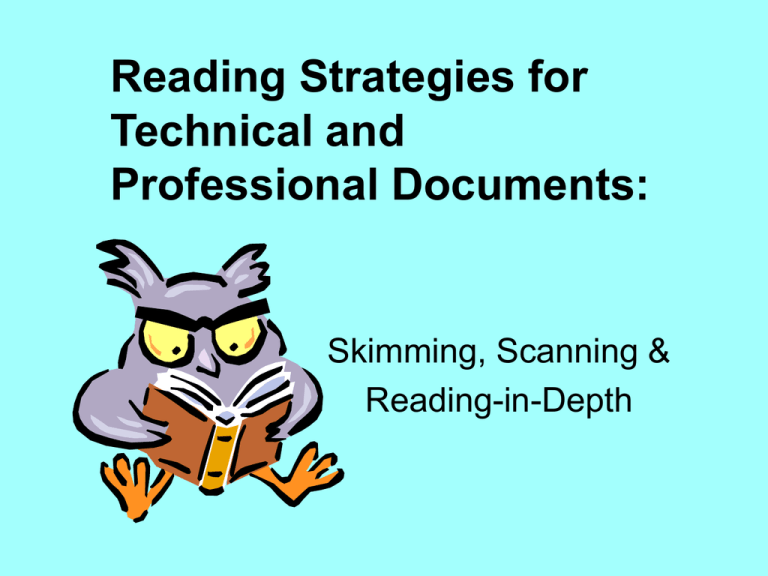
Reading Strategies for Technical and Professional Documents: Skimming, Scanning & Reading-in-Depth In this lesson you focused on strategies for reading technical and professional documents. Throughout the remainder of this course you will be reading a number of documents as you complete the various assignments. In each case you will need to determine and use the most appropriate reading strategy. Reading technical and professional documents is very different from reading a novel. Up to this point, the majority of reading you've probably done in school has been reading in-depth. You are given a chapter from a text to read in which you know you are going to be tested on your ability to remember all of the details; or you are assigned a novel to read and you have to create a book report. At other times, you have been given tasks which are better served by skimming or scanning. Unfortunately, a lot of students attack all tasks as if they are supposed to read in-depth. 3 different reading strategies: skimming: “trying to find out what information might be contained in a document” scanning: “trying to locate information you know is contained in a document” reading-in-depth: “understanding the entire picture the document is presenting and all of the supporting details of any position presented” Check-Up: vocabulary Match the definition below with the correct reading strategy. a. understanding exactly what the document says by reading all the details Correct!!! click here Sorry... When you read all the details in a document so you understand exactly what the document says that is called readingin-depth. Legal contracts are always read-in-depth before they are signed. click here Check-Up: vocabulary Match the definition below with the correct reading strategy. b. reading a bit of the document to see what is in it Correct!!! click here Ooops... When you read a bit of document in order to find out what’s in it you are skimming the document. Most paperwork is skimmed first to determine what you need to do with the it: read it more closely, pass it on to someone else, or throw it in the garbage. click here Check-Up: vocabulary Match the definition below with the correct reading strategy. c. reading key words in the document to find the detail you are looking for Correct!!! click here Nope... When you read key words in a document so you can find data you know is already there, you are scanning the document. When you use a computer manual to determine how to change your margins, you scan the manual’s index for “margin”. You know it has to be in there somewhere, so now you need to find it. click here Decisions, decisions, decisions Knowing whether to skim, scan or read-in-depth is critical in the work world. If you keep in mind the purposes of each, you should have no problem deciding which is the appropriate reading strategy. skimming: trying to find out what is in a document; scanning: trying to find something you know is in a document; reading-in-depth: knowing all the details contained in a document Skimming “trying to find out what information might be contained in a document” achieved by looking for key information who wrote the information? what is the topic? how important is the information to you? to the sender? are there any timeline issues? Generally speaking, most technical and professional documents are skimmed and if warranted they are read in-depth possibly at a later time. There is a great deal of paperwork that will cross your desk, no matter what technical or professional field you choose. You simply won't have time to read every document in-depth. Fortunately, most business documents follow predictable formats so with practice you will be able to skim through the standard ones and locate the crux of the message quite quickly. . Check-Up: Skimming On the next 5 slides are reading scenarios. For each situation decide if skimming is the best reading strategy. (Select an answer by clicking the appropriate box.) Your goal: at least 4 out of 5 correct Question #1: Skimming? You are a loans officer for a bank. A client has just walked in with a business plan. They want to talk to you about getting a loan. Should you skim the plan first? Wonderful!!! Keep track of the number of correct responses for this section. click here Sorry… You would skim the material to determine what the venture is and if the plan appears to meet minimal standards. If it did, you would scan the various sections and possibly ask the client some pertinent questions. Afterwards, you would probably book an appointment for a later date to review the plan with the client. Naturally, before the client arrives you would read the plan indepth. Now try the next one. Question #2: Skimming? You are a professional forester. You have received a copy of a report you and a team of colleagues have been working on. You respect your colleagues work, but have some concerns about the projected expenses and want to verify the figures. Should you skim the report first? Right!!! Keep track of the number of correct responses for this section. click here No... You would scan the report for the section you are concerned with. You wouldn't skim it since you already know what is in the plan. Before the plan is presented, you would probably take the time to read it in-depth to be sure it was coherent and accurate etc. Now try the next one. Question #3: Skimming? You are a social worker who has to make a presentation on the effects of gambling in your community. You have just completed an internet search; 216 articles were found. Should you skim the list first? Yes!!! Keep track of the number of correct responses for this section. click here Ooops Since you have an idea about what you want to find in the articles you would scan the results for something which looked promising. You would only skim the articles if you were doing a search on a topic you had no background in and were trying to get some sense of what was available. You certainly wouldn't read in-depth each of the 216 articles. Now try the next one. Question #4: Skimming? You are a mechanical engineer. Your boss has just completed your third performance review. Should you skim the review first? Great!!! Keep track of the number of correct responses for this section. click here Sorry... Most people start by scanning the performance review to find the bottom line: excellent, satisfactory, poor. After that they tend to read it in-depth since it is an important document in their career. Now try the next one. Question #5: Skimming? You are a marine biologist at an aquarium. The forensic scientist has just sent you a 10 page report outlining the cause of death of a 5 year old Orca. Should you skim the report first? Correct!!! Write down the number of questions you answered correctly for the “skimming” question. Set it aside for now and continue with the rest of this activity. click here Oops... You have seen forensic reports before. They follow predictable patterns and you want to know first and foremost the cause of death so you would scan the report for the appropriate section. You may choose to later read the entire report in-depth or just skim the document. Write down the number of questions you answered correctly for the “skimming” question. Set it aside for now and continue with the rest of this activity. Scanning “trying to locate specific information you know is contained in a document” achieved by looking for cues in the labels. in the headings. in the text passages. You will also need to be good at scanning documents, as there will be times when you know you've seen a detail and now you need to locate it. Scanning involves looking for specific sections and within those sections looking for specific comments. One of the most common uses of scanning is in using indexes to determine if a particular book will be of any value in your research. With the advent of the internet, there is so much information at your fingertips, the problem will be weeding through it to find what you really need. Therefore, being able to efficiently scan the results of web searches is a valuable skill. Check-Up: Scanning On the next 5 slides are reading scenarios. For each situation decide if scanning is the best reading strategy. (Select an answer by clicking the appropriate box.) Your goal: at least 4 out of 5 correct Question #1: Scanning? While in the middle of scanning the results of an internet search you find an article which appears to be exactly what you want. Should you choose to scan the article? Terrific!!! Keep track of the number of correct responses for this section. click here Sorry... Depending upon the length of the article, you would probably skim it first to see if it meets your hopeful expectations. If you still felt is was useful, you would read it in-depth. Now try the next one. Question #2: Scanning? You are a union representative for the local trade union. You have just received management's final offer for a contract settlement. Would you scan the offer first? Right-on!!! Keep track of the number of correct responses for this section. click here Ooops.... First, you would scan it for the key issues because the majority of the offer will be the same as it was the last time it was presented to you. Then, since you know how important legal documents are you would read it in-depth before responding to it. Now try the next one. Question #3: Scanning? You are a nurse who has just come on duty in the emergency room. You have 15 charts to read before the staff you are replacing leave for the night. Should you scan this document first? Superb!!! Keep track of the number of correct responses for this section. click here No... You skim the reports to get a feel for the types of patients currently in your care, you would go on to scan any of those charts with particularly critical patients. You probably would not have time to read the charts in-depth before the other staff leave. Now try the next one. Question #4: Scanning? You are a real estate salesperson. You have a meeting with a client who wants to lease some commercial space for a new business venture. You believe you have some suitable locations they would like to view. Should you scan the listings first? Correct!!! Keep track of the number of correct responses for this section. click here Nope. You scan through the listings looking for suitable dimensions, locations, features, and costs. Now try the next one. Question #5: Scanning? You are a computer programmer. You've just received a fax that a specific part of the software is not working properly. You need to locate the bug quickly and put the fix up on the web site as soon as possible. Should you scan the program first? Perfecto!!! Write down the number of questions you answered correctly for the “skimming” question. Set it aside for now and continue with the rest of this activity. click here Ooops... You scan through the program looking for the particular area of the program causing the problem. Skimming would not be appropriate since you know what's in the program already. There is certainly no need to read the entire program code in-depth. Write down the number of questions you answered correctly for the “skimming” question. Set it aside for now and continue with the rest of this activity. Reading-in-depth “understanding the entire picture the document is presenting and all of the supporting details of any position presented” achieved by reading each word carefully. all of the tabular data. all of the appendices. Check-Up: Reading-indepth On the next 5 slides are reading scenarios. For each situation decide if reading-in-depth is the best reading strategy. (Select an answer by clicking the appropriate box.) Your goal: at least 4 out of 5 correct Question #1: Reading-indepth? You’ve been working with a lawyer to develop a partnership agreement. He has just sent you the final draft for your signature. Should you choose to read the agreement indepth? Good!!! Keep track of the number of correct responses for this section. click here Sorry... You should read this agreement in-depth. All legally binding agreements must be read very carefully to ensure you understand the implications of signing the document. Now try the next one. Question #2: Reading-indepth? You’ve just received a bundle of resumes from applicants hoping to get the job you just advertised in the paper. Should you read each of the resumes in-depth? Perfecto!!! Keep track of the number of correct responses for this section. click here No... You should scan these resumes to see whether each applicant meets your basic requirements. Any that don’t will be thrown away. Only those that meet your minimal standards will get read-in-depth later. Now try the next one. Question #3: Reading-indepth? You have just been handed your “New Employee’s Manual” by your new boss. He wants you to “go through it tonight” for discussion tomorrow. It is 20 pages long. Should you read this manual in-depth? Wonderful!!! Keep track of the number of correct responses for this section. click here Ooops... Since it is only 20 pages in length, you should read it in depth. It will make a good impression on your boss if you are very familiar with the manual. Now try the next one. Question #4: Reading-indepth? You have just been handed your “New Employee’s Manual” by your new boss. He wants you to “go through it” tonight for discussion tomorrow. It is 300 pages long. Should you read the manual in-depth? Yes!!! Keep track of the number of correct responses for this section. click here Nope... You should skim the document and then read what you feel are important sections in-depth. There are way too many pages for you to read the entire document in-depth in one night. Now try the next one. Question #5: Reading-indepth? You are a computer programmer. Yesterday you received an e-mail about an update for one of the programs you use daily. You are trying to find the message amongst the list of messages in your in-box. Should you read the list in-depth? Correct!!! Write down the number of questions you answered correctly for the “skimming” question. Set it aside for now and continue with the rest of this activity. click here Ooops... You should scan the list for either the subject or the name of the person who sent you the email. It would be pointless to read each e-mail listing in-depth. Write down the number of questions you answered correctly for the “skimming” question. Set it aside for now and continue with the rest of this activity.
